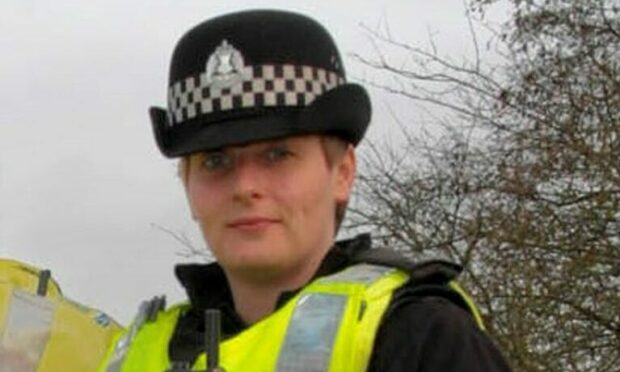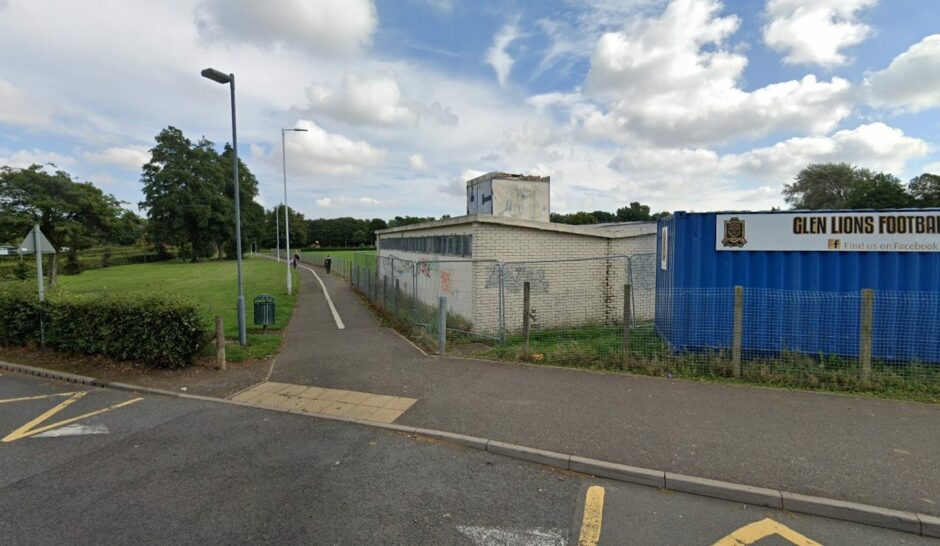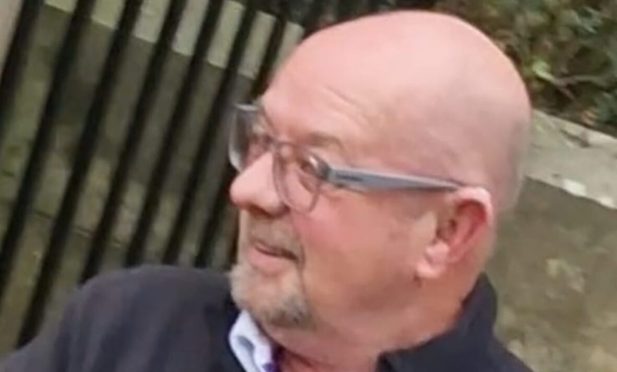A Fife police officer who knocked a teenager off his bicycle after mistaking him for a stalking suspect said the youngster fled because he had been smoking cannabis with friends.
PC Kayleigh Simpson is accused of dangerous driving and colliding with the then-15-year-old boy on a cycle path in Glenrothes near Auchmuty High School in March 2020.
A trial at Kirkcaldy Sheriff Court heard the police officer was part of the manhunt for violent domestic abuser Kevin Spratley.
Spratley was known to cycle and she had spotted a cyclist matching his description with part of his face covered with a snood.
PC Simpson, 34, followed the cyclist as he sped off and she drove a marked Peugeot 308, with blue lights flashing, on to the cycle path.
She told the trial she stayed behind the cyclist in first gear – at no more than 5mph to 10mph – and moved to the right side of the path to deter him from taking an exit which would mean losing sight of him.
Cannabis claim
PC Simpson said: “At this point he looked over his right shoulder and slowed ever so slightly on the pushbike and began to move over to the right-hand side and that has then put him in the course of my vehicle.”
She said she applied the brakes but made contact with the bike in what she described as a “nudge”.
PC Simpson said the cyclist continued forward with the bike for a “couple of car lengths” before it “toppled” over and he fell with it.
The officer then radioed that a male had come off the bike before establishing it was not Spratley.
She said the cycle path was well lit and she had a clear line of sight along it.
She said: “I asked him (the boy) why he had made off.
“He said he had made off because he had been with his mates and smoking cannabis.”
Suspect posed danger
The trial heard previously from police officers who said they do not train to make contact with other vehicles.
PC Simpson acknowledged she had no training in this but police attempt to “put containment on” people who are suspects on a bike.
She said: “It’s all to do with the proportionality of reason we are initially in a situation in the first place.
“If he had not made off from me, there’s no reason I would continue… but because of the situation and the circumstances we were in and the information at my disposal at that time, that was my justification for going after that pushbike.”
Kevin Spratley had earlier fled from a car in which he had been searching for an ex-partner.
Police later found it contained a “kill kit” including knife, tools, rope and mask.
She said he was known to use pedal bikes and had stolen one in the days prior to the incident.
PC Simpson said: “The reason we were trying to stop him was the danger posed to his (Spratley’s) ex-partner at that time.
“That was a factor in the risk assessment”.
Prosecutor Jill Currie suggested she failed to keep enough distance between her vehicle and the cyclist and had perhaps wanted to be the “hero” by bringing him down.
PC Simpson strongly denied this.
‘Low level contact’
Road traffic collision investigator George Gilfillan told the trial the lack of damage to the police car’s front bumper would suggest a “low level of contact” with the bike and minimal speeds involved.
Mr Gilfillan said a lack of physical evidence at the time makes it difficult to know whether the cyclist had collided with the police car or vice versa.
He said he was not surprised the chase had gone on to the cycle path.
“If Kayleigh Simpson had parked… as the cyclist was going along the cycle path and it had transpired to be the person suspected to be and he had gone on and carried out a dastardly deed, there would be lots of criticism about why (police) were not doing something positive and that police have let the public down.
“With the best of intentions, she has done what she has done.
“If you are saying perfection, you could point the finger at her but we do not live in a perfect world”.
PC Simpson denies driving the Peugeot dangerously by driving on to a cycle path in pursuit of the teenager, now aged 17, colliding with him whereby his bicycle was damaged and he was injured, on March 15 2020.
‘Rammed’ off bike
The trial heard previously from the boy, who said he was too scared to stop at the time and tried to flee down the footpath.
He told the court he could hear the car “revving” and that the police “rammed” him and he “went flying”.
The teenager suffered minor injuries.
The trial, before Sheriff Alison McKay, continues on November 11.












